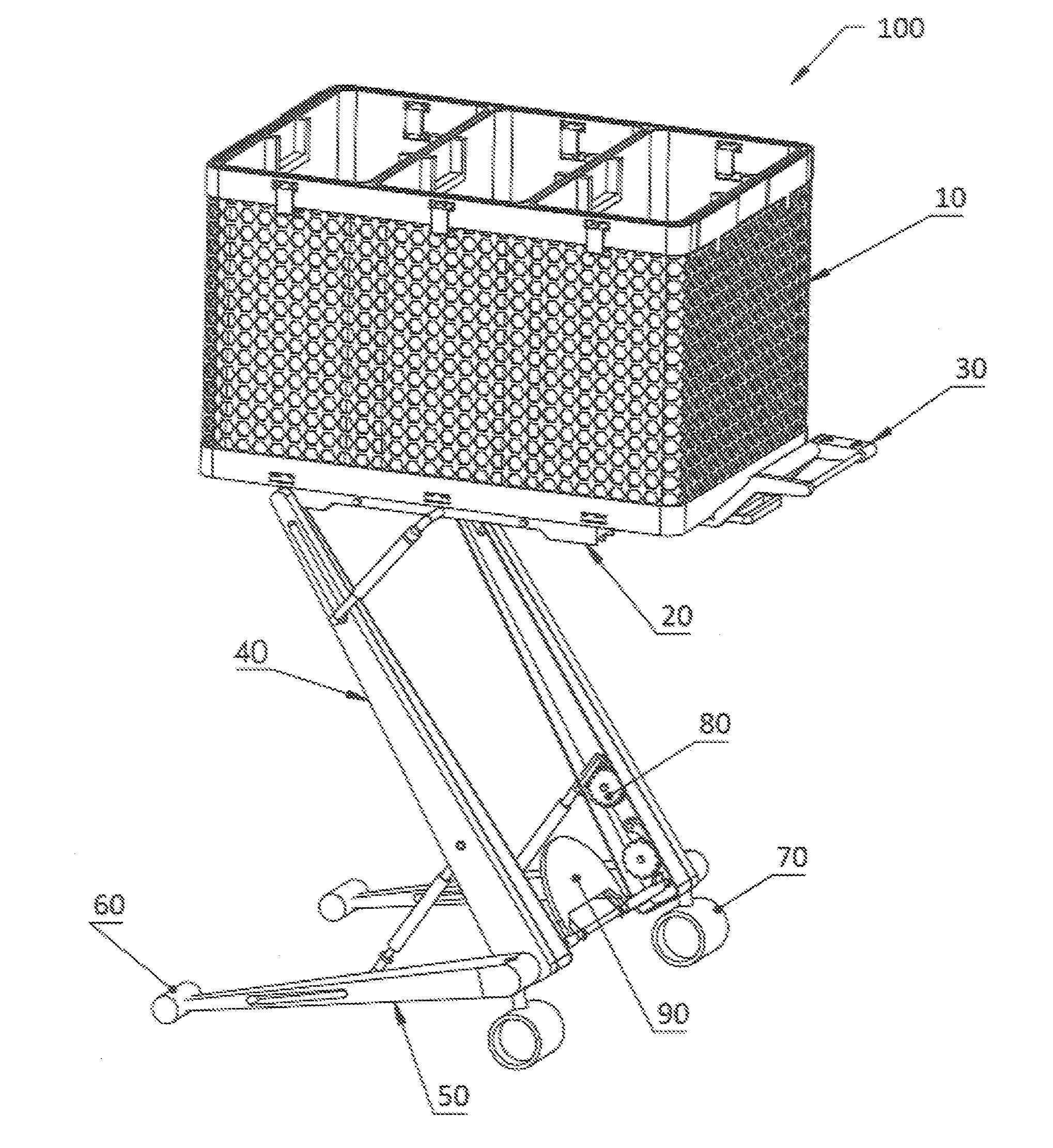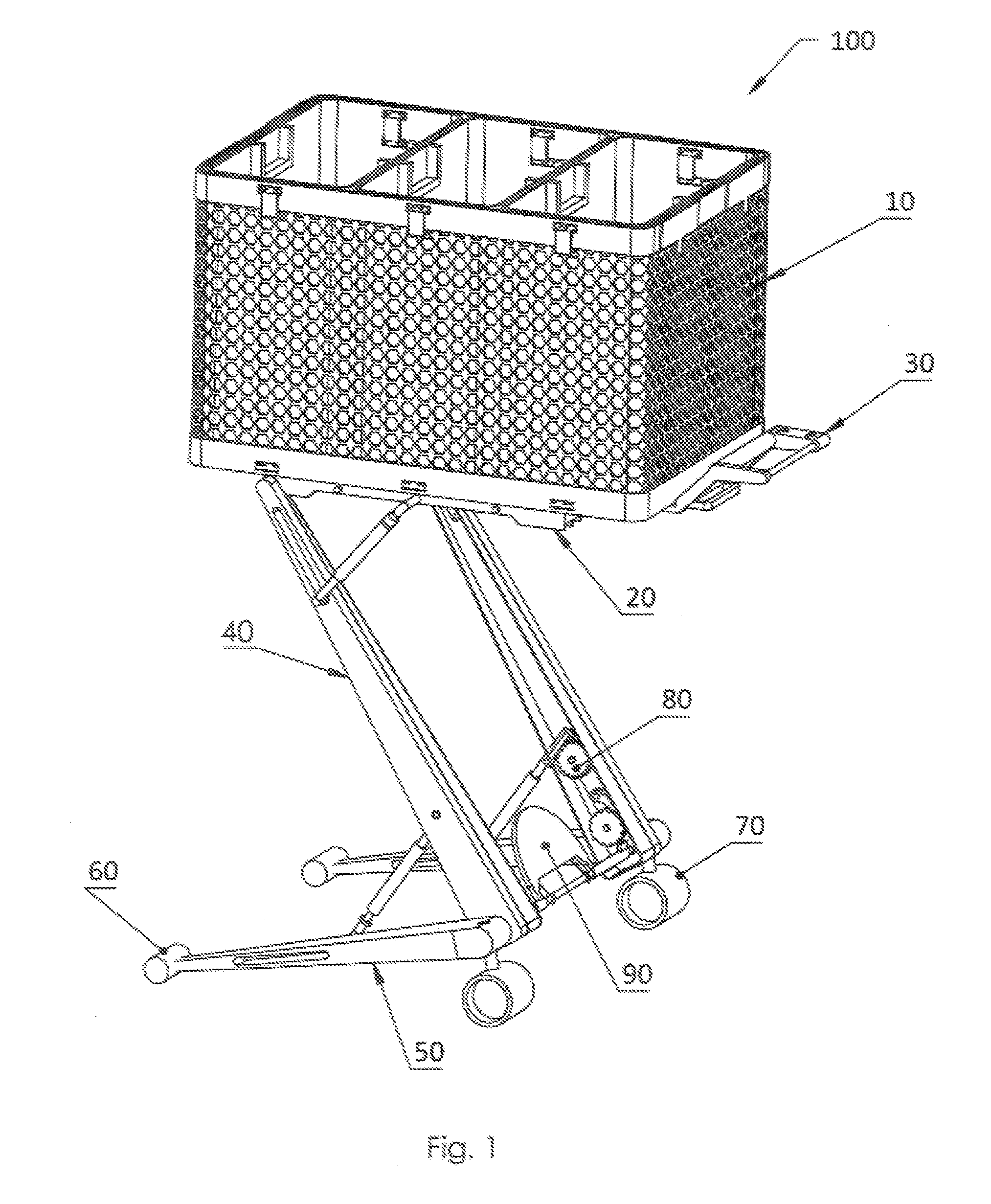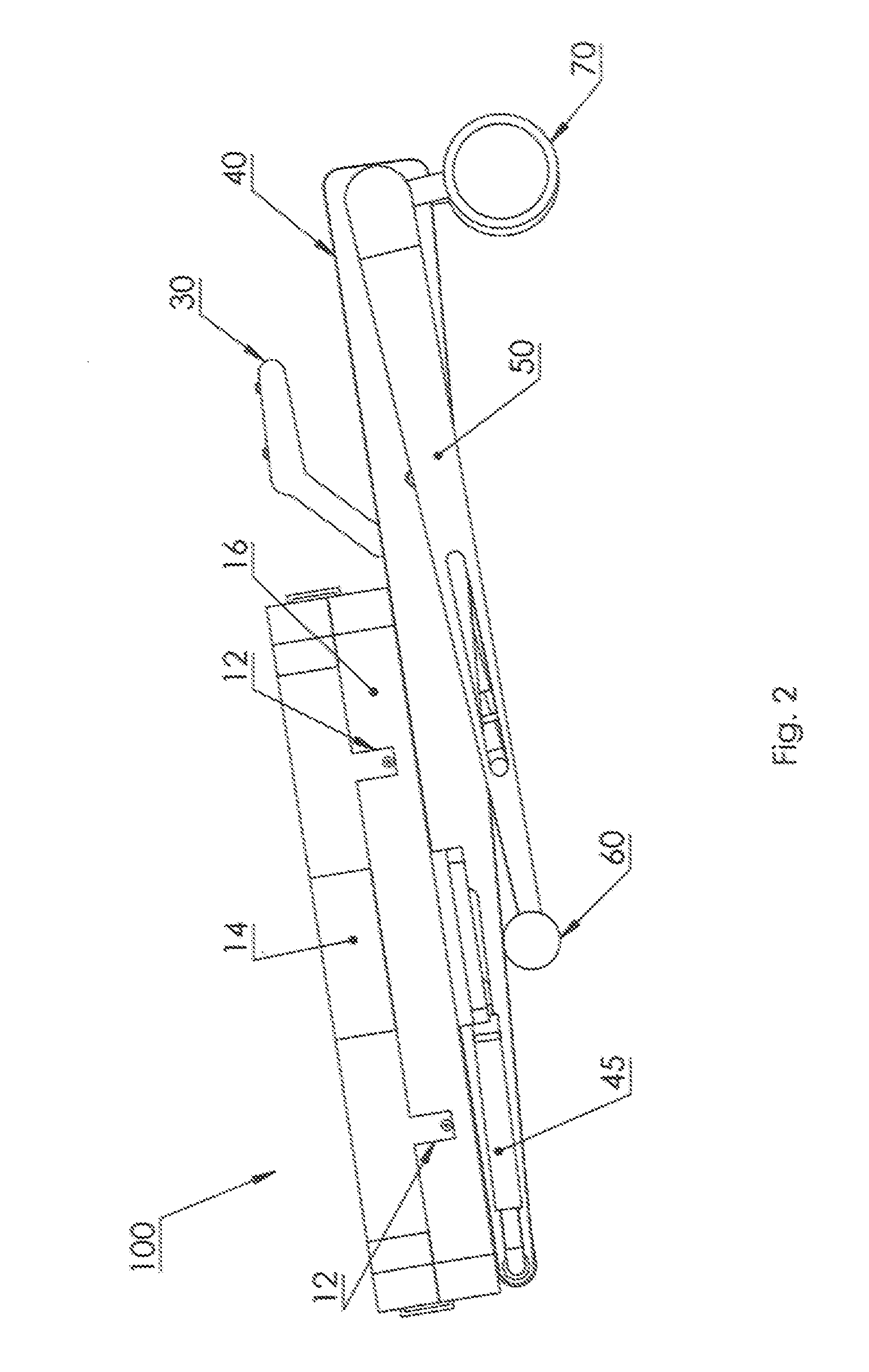Shopping cart
a shopping cart and cart body technology, applied in the field of shopping carts, can solve the problems of insufficient adaptability of shopping carts to the needs of modern day consumers, inability to adapt to the needs of modern consumers, and once again limited volum
- Summary
- Abstract
- Description
- Claims
- Application Information
AI Technical Summary
Benefits of technology
Problems solved by technology
Method used
Image
Examples
Embodiment Construction
[0027]Referring now to the drawings and in particular FIG. 1, a shopping cart according to the present invention is generally designated by reference numeral 100. Cart 100 is further comprised of a basket 10, a basket carrier 20, a handle 30, an upper leg assembly 40, a lower leg assembly 50, a set of front wheels 60, a set or rear wheels 70, an elevation mechanism 80, and a foot pedal 90. Each of these components shall be further described in detail in order to describe the operation and intended use of the present invention.
[0028]Referring next to FIG. 2, shopping cart 100 is shown in a fully collapsed state. As a first objective of the present invention, the shopping cart 100 can collapse into a flattened state of approximately six inches in height. Only a few simple steps are required to collapse the cart. First, basket 10 consists of a flexible open mesh fabric which is wrapped around a spring coil to form the four walls of the basket. This collapsible fabric with embedded spri...
PUM
 Login to View More
Login to View More Abstract
Description
Claims
Application Information
 Login to View More
Login to View More - R&D
- Intellectual Property
- Life Sciences
- Materials
- Tech Scout
- Unparalleled Data Quality
- Higher Quality Content
- 60% Fewer Hallucinations
Browse by: Latest US Patents, China's latest patents, Technical Efficacy Thesaurus, Application Domain, Technology Topic, Popular Technical Reports.
© 2025 PatSnap. All rights reserved.Legal|Privacy policy|Modern Slavery Act Transparency Statement|Sitemap|About US| Contact US: help@patsnap.com



